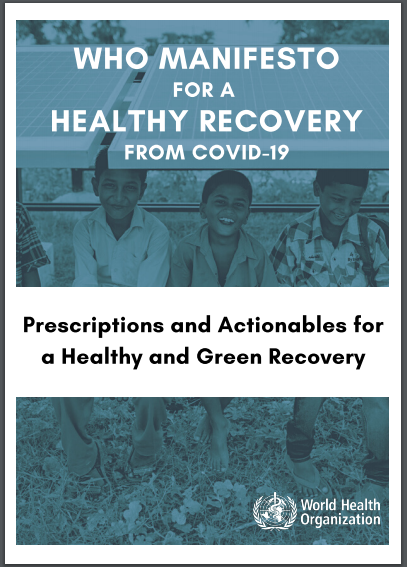WHO prescription 5: Build healthy, liveable cities.
Over half of the world’s population now lives in cities, and they are responsible for over 60% of both economic activity and greenhouse gas emissions. As cities have relatively high population densities and are traffic-saturated, many trips can be taken more efficiently by public transport, walking and cycling, than by private cars. This also brings major health benefits through reducing air pollution, road traffic injuries – and the over three million annual deaths from physical inactivity.
Many of the largest and most dynamic cities in the world, such as Milan, Paris, and London, have reacted to the COVID-19 crisis by pedestrianizing streets and massively expanding cycle lanes - enabling “physically distant” transport during the crisis, and enhancing economic activity and quality of life afterwards.
Actionables
City Design
- Integrate health into urban planning policies to deliver highly connected, mixed-use and compact neighbourhoods that are economically and socially viable and that promote active living, sustainable mobility, energy efficiency, healthy diets and access to essential services.
- Prioritize active and sustainable mobility as preferred mode of travel in relevant transport, spatial and urban planning policies.
- Improve walking and cycling infrastructure for people of all ages and abilities and create citywide access to safer walking, biking, nature, public spaces and public transport to support mobility, physical activity, recreation, access to services and social interactions, and to reduce the use of energy and resources.
- Improve access to good-quality public and green open spaces for people of all ages and abilities including accessible and safe play areas and recreational spaces for children and young people.
- Plan places that are more resilient to climate change and natural disasters.
Social inclusiveness and cohesion
- Create more socially inclusive places and spaces through a variety in spatial planning, such as in land parcel size, forms of land tenure, and size of housing.
- Develop a common vision for social cohesion and health equity by adopting a people-centred “right to health” framework that includes the right to access, use and transform urban environments.
Clean air
- Ensure cleaner air through implementing interventions in polluting sectors, such as in transport and industry, and through access to cleaner fuels and technologies for cooking, heating and lighting, adequate housing equipment and infrastructure development.
Access to adequate water, sanitation, hygiene, waste management and food
- Provide well-managed water, sanitation and hygiene facilities, adequate waste management and access to safe and healthy food .
Housing
- Ensure access to affordable housing that is not crowded, where indoor temperatures and thermal insulation are adequate, that is equipped with safety devices, and where disease vectors are controlled.
Resources and links


